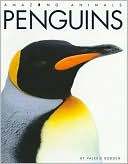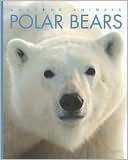The Virtual Bookshelf provides a list of recommended children’s books that reflect the theme of the issue and offers ideas on how to integrate them across the curriculum.
WEATHER AND Climate
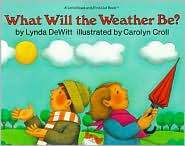 |
What Will the Weather Be? Lynda DeWitt. 1991. Nonfiction. Grades K-3.
With informative text and colorful pictures, this book explains the science of meteorology, warm and cold fronts, weather instruments, and the difficulties of predicting the weather. It complements the General Weather and Climate lessons in the Hands-On Science and Literacy Lessons About Weather and Climate article. |
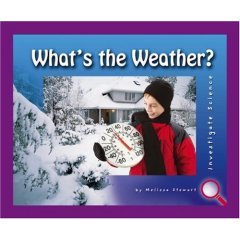 |
What’s the Weather? Melissa Stewart. 2005. Nonfiction. Grades 2-5.
Bright photographs and simple concepts urge children to explore weather through observation. Use in conjunction with General Weather and Climate lesson plans in the Hands-On Science and Literacy Lessons About Weather and Climate article. Boldface words and a glossary provide opportunities for vocabulary development. |
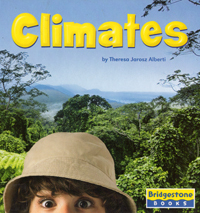 |
Climates. Theresa Jarosz Alberti. 2005. Nonfiction. Grades 2-5.
This book showcases Earth’s diverse climates and will help children compare and contrast polar and boreal climates with tropical, subtropical, temperate, mountain and desert climates. Use this book with the Comparing/Contrasting Weather and Climate lessons in the Hands-On Science and Literacy Lessons About Weather and Climate article. |
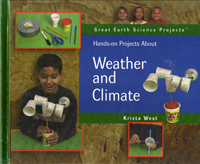 |
Hands-On Projects About Weather and Climate. Krista West. 2002. Nonfiction. Grades 2-5.
Students can learn about weather by creating simple barometers, anemometers, and rain gauges. Directions for activities are supported with photographs. Budding scientists will learn much from this hands-on approach. Use this book with the General Weather and Climate lessons and activities found in the Hands-On Science and Literacy Lessons About Weather and Climate article. |
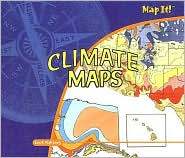 |
Climate Maps. Ian F. Mahaney. 2007. Nonfiction. Grades 3-5.
Maps aren’t just for representing cities, countries and landforms! Maps can also show us where average temperature and rainfall create distinct climates. Students will learn map terminology and how climate maps can be useful for both farmers and scientists. This book is a perfect complement to the lesson Creative Climates from the National Geographic Xpeditions web site. |
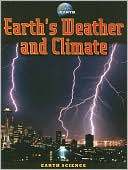 |
Earth’s Weather and Climate. Jim Pipe. 2008. Nonfiction. Grades 4-5.
Full-color pictures, maps, diagrams, and simple experiments help upper-elementary students develop an understanding of the world’s weather, everyday weather, extreme weather, and weather watchers. Small font size and multiple features per page make this book best suited for use with individuals or small groups. |
Climate Change
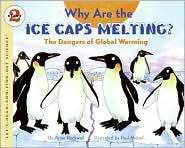 |
Why Are the Ice Caps Melting? The Dangers of Global Warming. Anne Rockwell. 2006. Nonfiction. Grades 2-5.
This book explains the science behind global warming and provides local examples to help students understand this complex subject. While the book emphasizes the serious nature of global warming, it also focuses on simple actions students can do to promote change. A read-aloud for younger grades and independent reading for older students. Use this book in conjunction with the lessons on Climate Change in the Hands-On Science and Literacy Lessons About Weather and Climate article. |
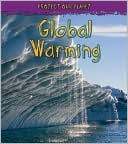 |
Global Warming. Angela Royston. 2008. Nonfiction. Grades 3-4.
Short text passages, a large font size, and simple explanations make this book ideal for use with elementary students. In addition to a basic summary of global warming, the book includes information on renewable energy sources (solar, wind, and water power) as well as low-carbon transportation, homes, and living. This book would pair well with the lessons and activities highlighted in the article Teaching About Natural Resources and Energy Sources. |
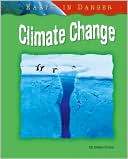 |
Climate Change. Helen Orme. 2008. Nonfiction. Grades 3-5.
What is climate change? How is the climate changing? And why? This book provides an introduction to the basics of climate change. Most notable are sections called “Just the Facts” and “How to Help,” which provide concise suggestions for student involvement, such as recycling, reducing the amount of electricity used, and conducting “energy audits” at school and home. This book would pair well with the resources and activities suggested in the article Taking Action: Energy Efficiency at Home and at School. |
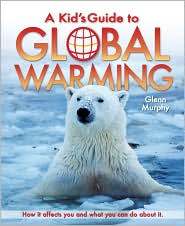 |
A Kid’s Guide to Global Warming. Glenn Murphy. 2008. Nonfiction. Grades 3-5.
Students will be engaged by this book’s full-color photographs, short, informational text, and compelling subject matter. This book is organized like an encyclopedia, answering the questions: What is global warming? What does it mean for us? What are we doing? and What can you do? This book is suitable for inclusion at a learning center or for studying the headings and structure of informational text. Use this book in conjunction with the lessons on Climate Change in the Hands-On Science and Literacy Lessons About Weather and Climate article. |
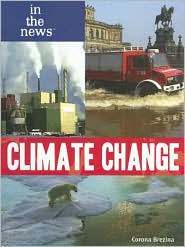 |
Climate Change. Corona Brezina. 2008. Nonfiction. Grades 4-5.
This compact resource explains the difference between weather and climate and how climates change over time. Topics include ice cores, greenhouse gases, and the effects of warming on the planet. Dense, expository text makes this most suitable for advanced students needing greater challenge and individual reading. Use this book in conjunction with the lessons on Climate Change in the Hands-On Science and Literacy Lessons About Weather and Climate article. |
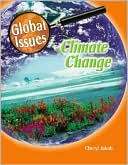 |
Climate Change. Cheryl Jakab. 2007. Nonfiction. Grades 5 and up.
This book presents five of the most urgent climate change-related issues around the world (melting ice, rising sea levels, record temperatures, increased and stronger hurricanes, and increased greenhouse gases) in a case study format. Each issue includes information about understanding, minimizing, and adapting to the problems caused by these issues. This book could serve as the basis for a jigsaw-style lesson, in which small groups become “experts” on one of the issues and teach the rest of the class. |
Penguins and Polar Bears
This article was written by Kate Hastings and Jessica Fries-Gaither. For more information, see the Contributors page. Email Kimberly Lightle, Principal Investigator, with any questions about the content of this site.
Copyright June 2010 – The Ohio State University. This material is based upon work supported by the National Science Foundation under Grant No. 0733024. Any opinions, findings, and conclusions or recommendations expressed in this material are those of the author(s) and do not necessarily reflect the views of the National Science Foundation. This work is licensed under an Attribution-ShareAlike 3.0 Unported Creative Commons license.

